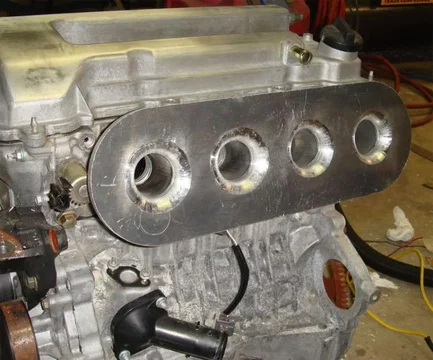to bad there is not enough room to extend the manifold past the last runner on the 1hdt,now that would be the ticket .
I think that a dual plenum design (pictured above) might help for filling that last cylinder as its purpose is to even out the intake flow to all the cylinders. The manifold for the 1hdt on the one side first has to feed cyl 4 then 5 and 6 lastly, so if the flow came from the side then it might get a more fair share. I wonder if you could cut and weld on a second plenum and just move the charge pipe over and block off the origional intake to the manifold for that. I think I remember reading that cyl 1 and 6 and are cheated out of proper flow and have shown piston damage from high egts. Perhaps some one could speak to that who onws one. I have often thought the 3B manifold design does cause cyl 1 and 4 to run rich, so I always asume my egts are higher from those cylinders than what my guage is reading.
Last edited:


